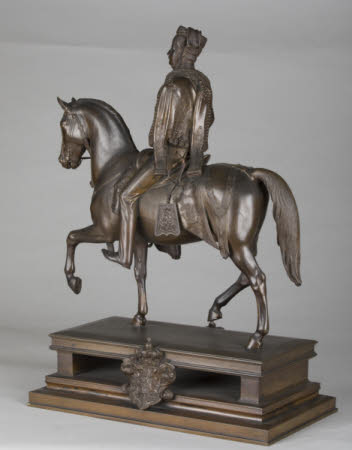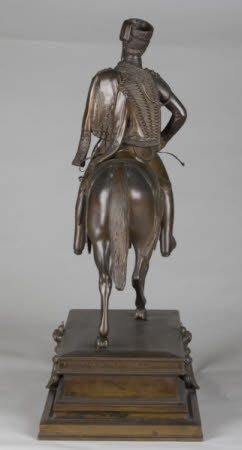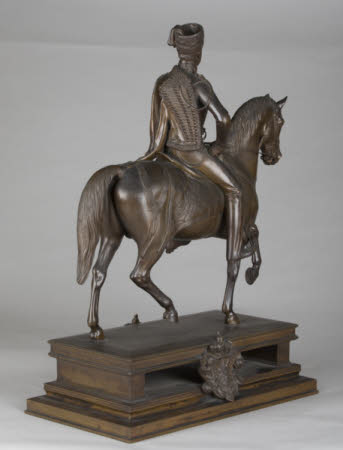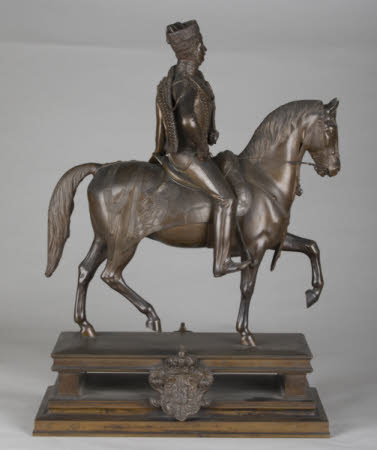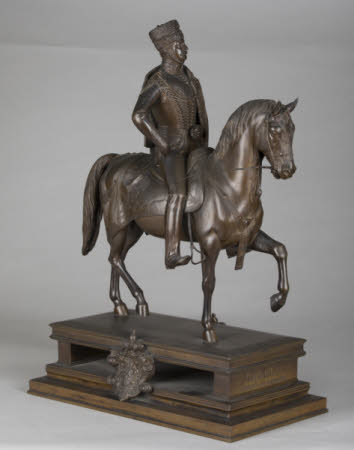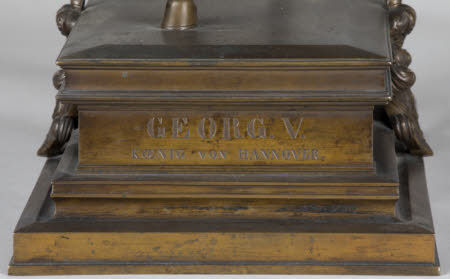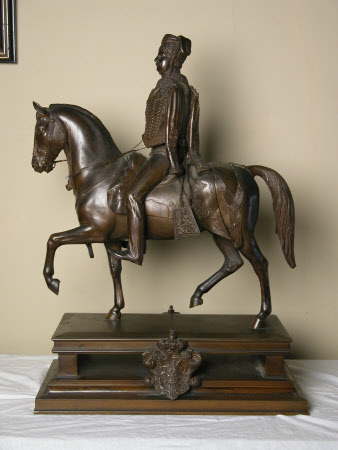King George V of Hanover on horseback
Heinrich Hesemann
Category
Art / Sculpture
Date
1855
Materials
Bronze
Measurements
590 x 450 x 225 mm
Place of origin
Hanover
Order this imageCollection
Osterley Park and House, London
NT 772004
Summary
Equestrian statuette in bronze depicting King George V of Hanover, 2nd Duke of Cumberland and Teviotdale, Earl of Armagh (1819-78), the last king of Hanover. By Heinrich Hesemann (1814-1856), signed and dated 1855, cast in the Bernstorff und Eichwede foundry in Hanover. George V is dressed in hussar’s uniform, mounted on a pacing horse. Mounted on stepped bronze openwork base, with the coat-of-arms of the Royal House of Hanover mounted on the long side. Title and signature incised in base.
Full description
Christian Heinrich Hesemann (1814-56) was born in Hanover and spent much of his short career in that city, as court sculptor to King Ernst August (1771-1851) and his son King Georg V (1819-78). He trained in Berlin as a pupil of the sculptor Christian Daniel Rauch (1777-1857). Hesemann made a number of bust portraits of Georg V, whilst his final project, in collaboration with the sculptor Albert Wolff, was for a monumental equestrian statue of Ernst August, which was completed in 1861 and is located in the square outside the central station in Hanover. Hesemann’s part in this project was curtailed by his early death, before which he was nevertheless able to model the king’s hussar’s uniform and head. The equestrian statuette of King George at Osterley is very similar in its conception to the much larger Ernst August memorial. It seems probable that it was made at least partly in connection with that project, suggesting that Hesemann may have had more to do with the overall conception than has hitherto been realised. King George V was the last king of Hanover, losing his throne in 1866 on the annexation of Hanover by Prussia. Blind from the age of 13, he was enabled to exercise his royal function of signing official documents through the presence of trusted witnesses. As this statuette shows very well, he tried throughout his life when in public to conceal his disability. George was a first cousin of Queen Victoria and second-in-line to the British throne until the birth of Victoria’s first child. Unlike his father, he supported Austria against Prussia in the power struggle within the Deutscher Bund and was as a result forced into exile, when the Prussians annexed Hanover in 1866. He is buried at Windsor. There is a plaster bust of George V by Hesemann in the Niedersächsische Landesgalerie in Hanover (Gert von der Osten, 'Katalog der Bildwerke in der Niedersächsischen Landesgalerie Hannover', Munich 1957, no. 407). Jeremy Warren September 2017
Provenance
Purchased from George Child-Villiers, 9th Earl of Jersey (1910-1998) by HM Government in 1949 for the Nation and vested in the Victoria and Albert Museum; transferred to the National Trust in 2002.
Credit line
National Trust Collections (Osterley Park, The Jersey Collection)
Marks and inscriptions
On narrow side base at front: GEORG.V./KOENIG VON HANNOVER. On narrow side base at rear: H. Hesemann fec. 1855. Bernstorff u. Eichwede fud.
Makers and roles
Heinrich Hesemann, sculptor Bernstorff und Eichwede Foundry, founder

